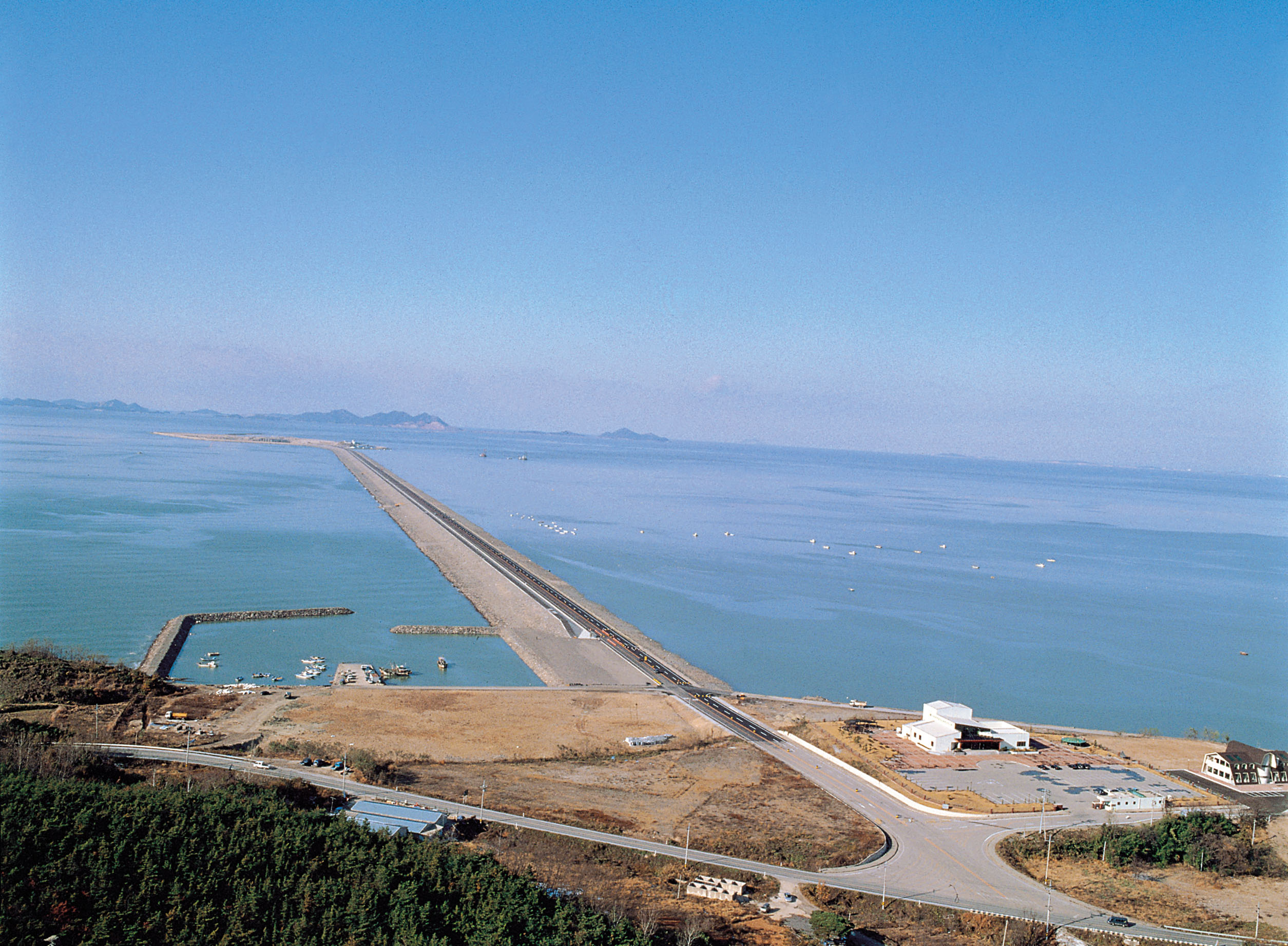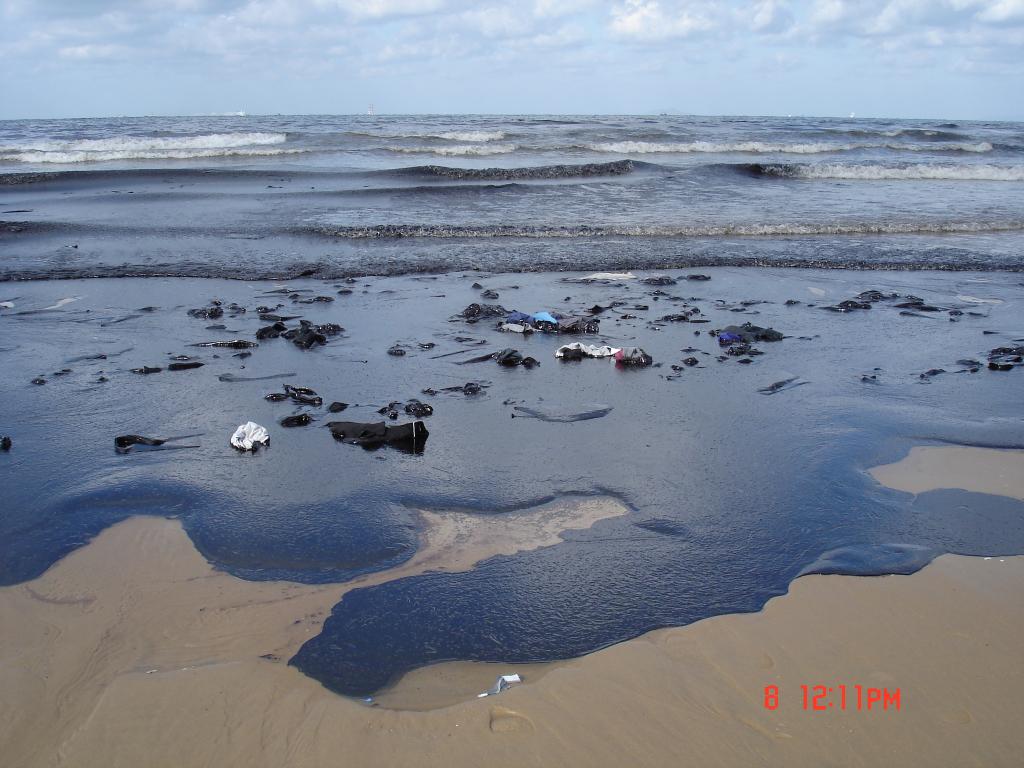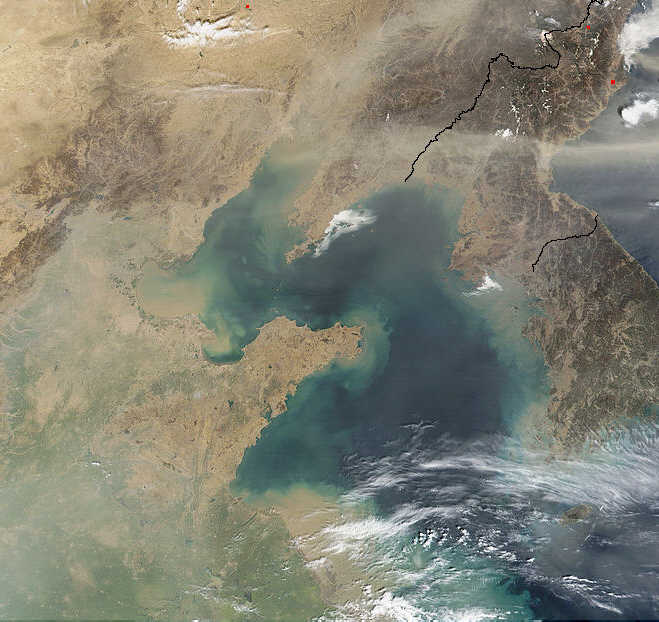The three culprits: Saemangeum reclamation, the Hebei Sprit oil spill, and industrialization in China
| Editor's Note |
| The West Sea is considered to be the pride of Korea. Not only for the rich marine products it offers us, but also for the vast mud flat, which is one of the best three worldwide. This sea has been an important part of Korea. Now, this precious pride, which has been formed over tens of thousands of years, is in danger, due to our neglect and abuse. It is a time to realize the seriousness of this problem as well as our overall responsibility and look further into the future. |
| -An Na-hyun, Editor of Social Affairs Div. |
KOREA IS blessed with its beautiful sea that surrounds three sides of the country. Koreans take the easily accessible sea for granted, especially the
| Part 1: Saemangeum reclamation project |
Dying lives at Saemangeum

The ecosystem of Saemangeum has been disturbed because of the Saemangeum reclamation project, the construction of a 33km tide embankment and reclamation of the sand bar in Jeollabuk-do. After the completion of the Saemangeum embankment in 2006, authorities started to control the depth of the water through a floodgate. Unnatural changes in the water level turned the rich sand bar that once embraced thousands of living creatures into rigid land. After the authorities excessively lowered the water level in July of 2007, a large group of yellow shellfish died on
Not old-adhering, a bold decision is needed
Twenty years ago, the Saemangeum project was first designed for agricultural use in order to overcome a deficiency in the supply of rice. Now that
In desperate need of attention
What Saemangeum needs the most is students’ attention. Having heard of the issue too much for their twenty-some lives, most university students became numb to the issue. Therefore, the communities that lived on the Saemangeum sand bar and neighboring sea are now abandoned. The communities need people’s attention to hold onto their hope. Students can make a difference by actively participating in the process of setting policies. They can try to stop the Saemangeum project or at least make the construction more eco-friendly. University students can also show their attention by helping the residents of Saemangeum raise their voice to the society. Being mostly old, the residents of Saemangeum are vulnerable to new and complicated information; therefore, it is difficult for them to oppose the government. Students can act as information deliverers who explain difficult legal terms or up-to-date environmental research to the residents of Saemangeum.
| Part 2: The Hebei Spirit oil spill in Taean |
The monstrous disaster in Taean

An oil tanker, Hebei Spirit, was hit by a Samsung tugboat and spilled 10,500 tons of oil. The Hebei Spirit oil spill was surreal for the Taean residents. The beautiful beach that used to attract tourists was filled with black oil. “There is no oil left to wipe off on the seashore,” says a volunteer worker few months after the incident. The beaches on the surface seemed clean. However, the aftermath of the oil spill is unimaginable.
Tar balls formed among the oil spill area was found out to be lethal to the living organisms. A research team led by Choi Kyeong-ho (Prof., Seoul National Univ.) conducted an experiment proving the toxicity of tar from the spilt oil. They put the water fleas in the tar-dissolved water (60mg/l) for 48 hours and about 50% of them died. Unfortunately, many evidences of this experiment have appeared in the sea. On Jan. 16, thousands of dead squillas (mantis crab) were pushed upon the shore by tidal wave. Many environmentalists presume that lugworms, crabs, clams, and other sea creatures will also die sooner or later.
280,000L of oil spill dispersant was sprinkled over the damaged area. Instead of dissolving the oil, the dispersant spread the toxic chemicals and broke the tar balls into pieces, making it harder to remove them. Moreover, according to an experiment carried out by Korean Federation for Environmental Movement (KFEM), the toxicity of the dispersant itself was also proven to cause damage to the ecosystem. Fish from the oil spilt site lived much shorter in the dispersant-treated water.
Dodged responsibility
The government should have predicted upcoming hazardous circumstances and taken technical measures to protect the citizens from them. However, the government has not performed its role successfully. Although visible oil on the beach has almost been cleaned, unreachable oil is still left. For instance, the second oil wave surged on to the coast once again on Jan. 25, making residents even more hopeless. The government should have provided proper research environments for the experts to predict such consequences. Additionally, since the government had not organized research, there was not any improvement in the recovery process after the Sea-prince oil spill*. If proper research had been done, the technical measures would have been taken and the second damage could have been avoided. Based on the research, the government could have informed the people what to do and what not to do. The excessive use of the oil spill dispersant by Korean Coast Guard could have been stopped if they had been informed of the harmful effects.
In need of warm hands
University students may not have the actual power to make this disaster disappear, but their concern can quicken the recovery. KFEM is trying to conduct much research, but they are having a hard time because of the lack of manpower. Volunteering as a student researcher can be helpful for the fast recovery and prevent future oil spills. In addition, communities damaged by the oil spill need people's care. “When the oil just leaked, residents of Taean needed hands to wipe out the oil. Now, they need a remedy for their broken hearts,” says Lee Pyung-joo, the director of Seosan-Taean KFEM who is in direct contact with hurt people.
| Part 3: Industrialization in |
Growing China, crying

As China started its rapid development, the
A research revealed that about five million used batteries are dumped into the
Another problem is
Time for action: better late than never
Before it gets too late to clear up the polluted
* * *
The three disasters appear unrelated, but they have two common factors; they are man-made, and they threaten the
*The Sea-prince oil spill: An oil spill happened at Jeollanam-do in 1995. The marine resources have decreased since the incident, and the remnants of spilt oil were still found in 2007.
| Get your highlighter 1: Helping Saemangeum |
| “We get more and more exhausted,” says Go Eun-sik, a manager of the <Sand Bar School-Gre>. Just visiting and showing that people are still attentive to the Saemangeum can be encouraging. 1. Visit Saemangeum and experience the sea life The <Sand Bar School-Gre> offers a two-day sand bar field trip. The members of Gre introduce lives of fishermen, living things in sand bar, and the negative aftereffects of Saemangeum reclamation. Cost : 25,000 per person 2. Nonghwal, now get some Gethwal Many students consider nongwhal, the farm activity, as the memorable romance of university life. A sand bar activity can be a good alternative. The manager of Gre says there are plenty to help out in the sea farm too. The village can hold up to 50 students. Call 063-583-3985 (Sand bar school - Gre) or visit www.nongbalge.or.kr/gre/ to register |
| Get your highlighter 2: Helping Taean |
| “I repeat, ‘constant’ participation is the first priority,” says Choi Ye-yong, director of management at KFEM. Keep this in mind and look below for what you can do. 1. Be a student researcher To examine the impacts of the oil spill and to restore the sea faster and easier for the next accident, much research is needed. There are three areas of research: the influence of the oil spill on society, health, and the ecosystem. - How long? : You can participate every day and for two weeks or more, or you can participate once or twice a week and for few months. Call 02-735-7034 (Citizen’s Institute for Environmental Studies) or visit cies.kfem.or.kr 2. Still need your golden oil-wiping hands Many people think that there is no more need to wipe off the oil on the seashores. However, some alienated islands are still suffering. Going to the islands that are still in need of help and wiping the oil off the coast will be a great help. - How long? : It takes more time than usual because it is an on-board journey. If you long to give more help, one night-two day volunteer is recommended. 3. Go spread this information. The more, always the merrier. |
| Spotlight |
| The damages represented above are just the tip of the iceberg. While interviewing people and gathering information, I was astonished at how serious the condition of the West Sea was. In the past, development meant constructing. Well, does it still? Destroying nature to develop is not one step further but two steps backwards. Now since the untouched nature has become scarce, development, in the far sight, should mean preserving nature. |
| <L.G.R.> |

